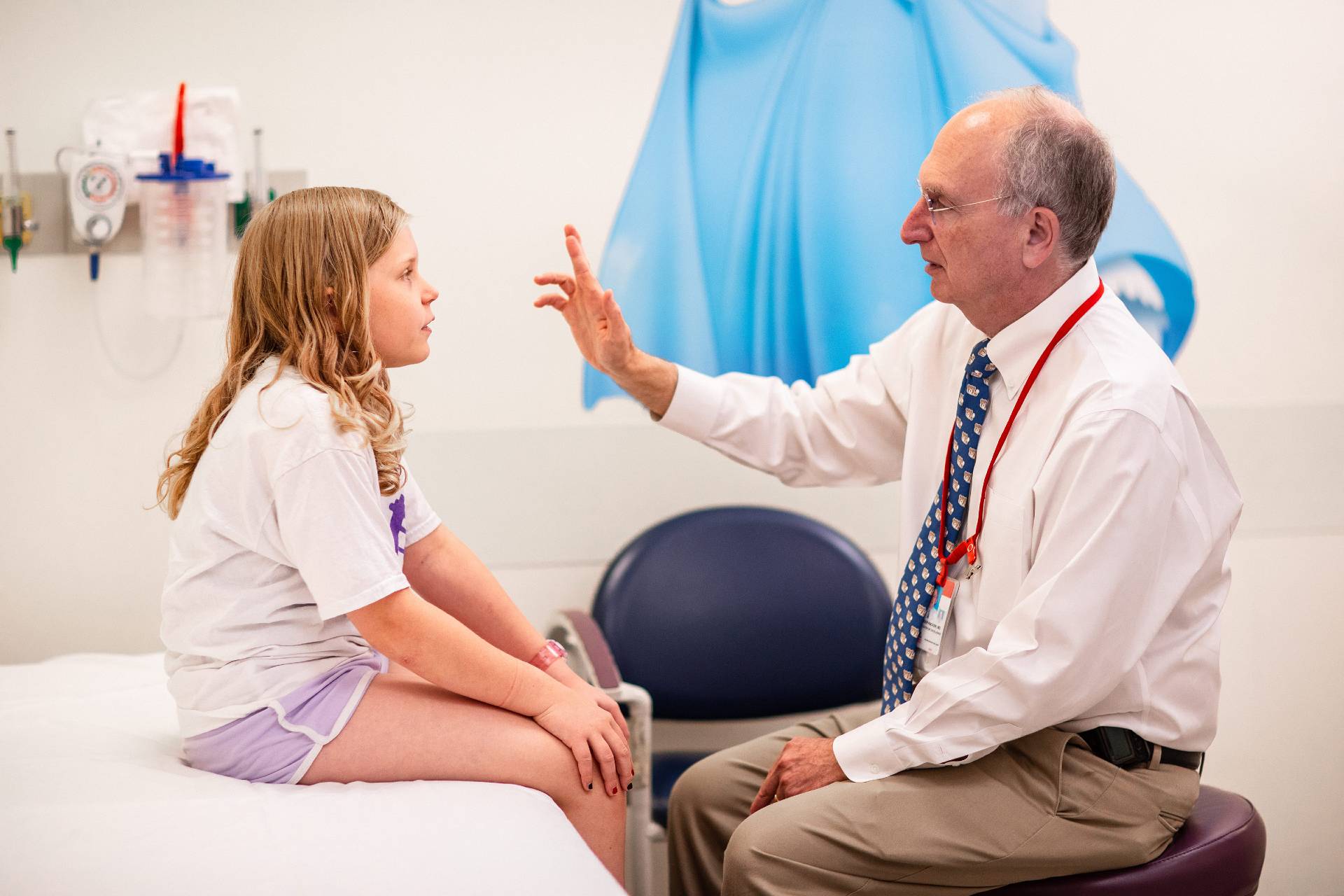Condition
Pediatric Malignant Peripheral Nerve Sheath Tumors
What You Need to Know
Malignant peripheral nerve sheath tumors are tumors that develop in the cells surrounding the nerves on the brain and spinal cord.
Diagnosis
Treatment
Schedule an Appointment
Our pediatric specialists provide personalized care for your child’s physical, mental and emotional health needs. Meet our providers and schedule an appointment today.
Malignant peripheral nerve sheath tumors (tumors that develop in the cells surrounding the nerves on the brain and spinal cord) may occur in up to 5% of patients with neurofibromatosis during their lifetime. These tumors are thought to arise predominantly from congenital plexiform neurofibromas and usually do not develop until late in the teenage years or early in adulthood. In an area of a known plexiform neurofibroma (skin tumor), there should be concern of malignant transformation into a malignant peripheral nerve sheath tumor if there is sudden enlargement of the lesion or if there is new onset pain or neurologic or physical compromise.
Diagnosis of Malignant Peripheral Nerve Sheath Tumors
Diagnosing a malignant transformation of a peripheral nerve sheath tumor can be difficult. A tumor may become malignant if an MRI scan shows significant enlargement or new enhancement (dye being taken up) of a portion of the tumor. A PET scan (positron emission tomography) can be useful if a portion of the growth is found to be 'hot' (metabolically active) on the PET scan. Often, at least a biopsy (removing cells or tissue to examine them),if not an excision (completely removing a tissue, organ or tumor from the body) is required to confirm the diagnosis of a malignant peripheral nerve sheath tumor. In cases where diagnosis is unclear, at least a biopsy should be performed to rule out malignant transformation.
Treatment for Malignant Peripheral Nerve Sheath Tumors
The treatment for malignant peripheral nerve sheath tumors continues to evolve. Patients have the best outcomes if tumors can be fully removed. This does not, however, ensure long-term disease control. Other therapies used to try to control malignant peripheral nerve sheath tumors, especially those, which are only partially resected, include multi-agent chemotherapy and radiation therapy (in selected cases). Children's National Hospital in cooperation with the Children's Oncology Group and the National Cancer Institute, are performing a series of innovative studies in attempts to create better therapies. Children's National is collaborating with the Department of Defense Neurofibromatosis Clinical Trials Consortium.
Meet the Providers Who Treat Malignant Peripheral Nerve Sheath Tumors
Departments that Treat Malignant Peripheral Nerve Sheath Tumors

The Gilbert Family Neurofibromatosis Institute
Learn more about our world-renowned Gilbert Family Neurofibromatosis Institute, which helps children with neurofibromatosis type 1 or 2 live more normal lives.

Help Kids and Make a Difference
Invest in future cures for some of life's most devastating diseases. Give today to help more children grow up stronger.








